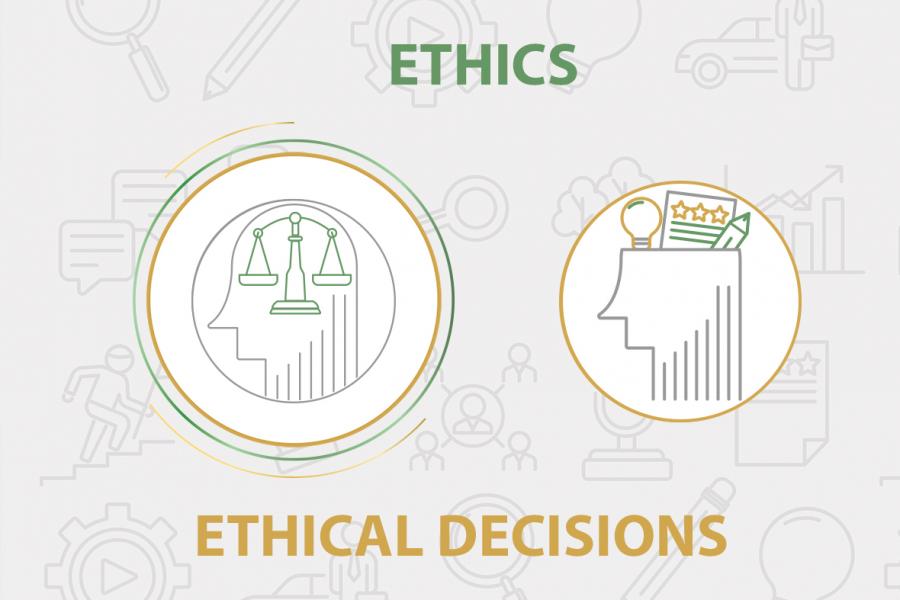 Ethical Behaviour -Ethical Decision-making
Ethical Behaviour -Ethical Decision-making
Ethical decision-making is an integral part of being an effective practitioner
Ethical Behaviour - Ethical Decision-making
Introduction
Ethical decision-making is an integral part of being an effective practitioner. Being ethically or morally aware and willing to be answerable for the ethical basis of practice is essential for a successful practice.
Ethical decision-making involves gathering all information, determining whether a problem truly exists, and whether or not there is an ethical, moral, legal, clinical or professional issue involved. It considers the client's rights and professional obligations in order to make a decision. It is also the process of considering different courses of action and their outcomes and consequences both for the client and the practitioner.
Ethical decisions sometimes involve consultation with peers and colleagues or with supervisors. It involves gathering evidence from research to decide how best to apply professional and ethical codes, values and principles in practice.
Ethical foundations
According to researchers Makela (2019) and Forester-Miller & Davis (1996), there needs to be a foundation for ethical relationships to be built upon. This rests on the foundation of:
- Non-maleficence. This refers to not intentionally or unintentionally causing harm to others.
- Beneficence. This is about being proactive, promoting positive growth and doing good for other people.
- Autonomy. This refers to respecting the right for self-determination and independence.
- Justice. This includes fairness and equality for all.
- Fidelity. This refers to honouring commitments, loyalty and fairness.
- Veracity. This deals with honesty and transparency.
- Think about as many potential courses of action as possible. This also means that the practitioner should consider those options which might not work.
- Do not focus on judging and removing solutions as you will assess those next.
- When possible, consult with at least one colleague who subscribes to the SACDA Code of Ethics to help you generate options.
- Using the information gathered, evaluate each option, but be sure to assess the potential consequences for all of the people involved. Consider the implications that each course of action has for the client, for others and for yourself as a practitioner.
- Remove the options that are no longer applicable or those that cause more challenging consequences.
- Review the options to determine which option or combination of options best fits the situation and addresses the priorities you have identified.
- Assess the course of action to see if it presents any new ethical challenges.
- Use the rule about the three simple tests to the selected course of action to make sure that it is appropriate for the situation: justice, publicity and universality (Stadler, 1986).
- Justice: when using the test of justice, evaluate your sense of fairness by asking yourself if you would treat other people the same way in a similar situation in the future.
- Publicity: to test publicity, ask yourself whether you would want your behaviour publicly reported on in the media.
- Universality: The ‘test of universality’ questions whether you would recommend the same course of action to a colleague in the same situation.
Shared under a Creative Commons Attribution-NonCommercial-NoDerivatives 2.0 South Africa (CC BY-NC-ND 2.0 ZA)
This means you can share and adapt this work but not for commercial purposes. You will only need to include the following reference to the original content in all shared works.
Kindly attribute as follows:
Beukes, C. J., Mahadave, K., & Kanhai, K. (2022). Professional Development Portfolio for Career Development Practitioners (1st ed.). CC BY-NC-SA 2.0 ZA, https://creativecommons.org/licenses/by-nc-nd/2.0/za/
Authors
![]() Karuna Mahadave
Karuna Mahadave
![]() Christopher John Beukes
Christopher John Beukes

You can earn 1.00 CPD point/s by completing and passing the self-assessment questionnaire for this article.
1.00